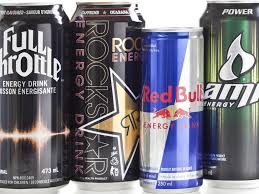
In the fast-paced world of the 21st century, the consumption patterns and industrial interests of society often intertwine in curious ways. A fascinating intersection can be observed in the domains of energy drinks, whiskies, electronic miner machines, seafoods, and chemicals. While these sectors might seem disparate at first glance, they share a surprising number of connections through cultural, economic, and technological lenses. This article delves into each of these areas, exploring their individual significance and how they converge in unexpected ways.
The Surge of Energy Drinks: Fueling Modern Lifestyles
Energy drinks have become a staple for many, promising an instant boost of vitality and alertness. These beverages, often packed with caffeine, taurine, and a mix of vitamins and amino acids, cater primarily to young adults and professionals who seek a quick energy fix.
The Rise of Energy Drinks Energy drinks emerged in the late 20th century and have since seen exponential growth. Brands like Red Bull, Monster, and Rockstar dominate the market, each offering a variety of flavors and formulations. The appeal of these drinks lies in their ability to enhance mental and physical performance temporarily, making them popular among students, athletes, and workers with demanding schedules.
Health Implications Despite their popularity, energy drinks are not without controversy. Health experts warn about the potential risks associated with excessive consumption, including heart palpitations, high blood pressure, and anxiety. The high caffeine content, combined with other stimulants, can lead to dependency and withdrawal symptoms, raising concerns about their long-term impact on health.
Whiskies: A Timeless Elixir
Contrasting the modern allure of energy drinks, whiskies represent a time-honored tradition of craftsmanship and cultural heritage. From the Scottish Highlands to the bourbon distilleries of Kentucky, whisky production is an art that has been refined over centuries.
The Craft of Whisky Making Whisky production involves a meticulous process of fermentation, distillation, and aging. The choice of grains, the quality of water, and the type of cask used for aging all contribute to the distinctive flavors and aromas of different whiskies. Scotch whisky, for example, is often characterized by its smoky notes, derived from drying the malted barley over peat fires.
Cultural Significance Whisky holds a significant place in many cultures, often associated with tradition, celebration, and social bonding. Whether it’s a dram of Scotch sipped slowly by a fireplace or a glass of bourbon enjoyed at a lively gathering, whisky serves as a symbol of refinement and conviviality.
Electronic Miner Machines: The Backbone of Modern Mining
In the realm of technology, electronic miner machines have revolutionized the mining industry. These advanced machines, equipped with state-of-the-art electronics and automation systems, enhance efficiency and safety in mining operations.
Technological Advancements Electronic miner machines leverage cutting-edge technologies such as artificial intelligence (AI), machine learning, and the Internet of Things (IoT) to optimize mining processes. These machines can autonomously navigate mine shafts, analyze geological data in real-time, and perform complex tasks with precision, reducing the need for human intervention in hazardous environments.
Economic Impact The adoption of electronic miner machines has significant economic implications. By improving the efficiency of mineral extraction and reducing operational costs, these machines contribute to the profitability of mining companies. Furthermore, the data collected by these machines can inform better resource management and environmental conservation practices, aligning with the industry’s sustainability goals.
The Culinary Delight of Seafoods
Seafoods, encompassing a vast array of marine delicacies, hold a special place in global cuisine. From sushi in Japan to paella in Spain, seafood dishes reflect the culinary diversity and richness of coastal cultures.
Nutritional Benefits Seafoods are renowned for their nutritional value, being rich sources of high-quality protein, omega-3 fatty acids, vitamins, and minerals. Regular consumption of seafood is associated with numerous health benefits, including improved cardiovascular health, enhanced brain function, and reduced inflammation.
Sustainability Concerns While seafood is a culinary treasure, it also raises concerns about sustainability. Overfishing, habitat destruction, and pollution threaten marine ecosystems, necessitating responsible fishing practices and sustainable aquaculture. Organizations and consumers are increasingly advocating for seafood sourced from sustainable fisheries to ensure the long-term health of ocean habitats.
Chemicals: The Building Blocks of Modern Industry
Chemicals play a pivotal role in various industries, from pharmaceuticals and agriculture to manufacturing and energy production. These substances are fundamental to the development and functionality of countless products and processes.
Industrial Applications In the energy sector, chemicals are used in refining crude oil, producing renewable energy sources, and developing advanced battery technologies. In agriculture, chemical fertilizers and pesticides enhance crop yields, while in the pharmaceutical industry, chemicals are essential for drug synthesis and formulation.
Environmental and Health Considerations The use of chemicals, however, is not without its challenges. Many chemicals pose environmental and health risks, leading to regulatory measures aimed at controlling their production, use, and disposal. The push towards green chemistry seeks to develop more sustainable and less hazardous chemical processes and products, reducing the overall ecological footprint.
The Convergence: Uniting Diverse Sectors
At first glance, energy drinks, whiskies, electronic miner machines, seafoods, and chemicals might seem unrelated. However, their convergence can be observed through various intersecting themes such as technology, sustainability, and cultural significance.
Technological Innovations Technological advancements connect these sectors in profound ways. For example, the production of energy drinks and whiskies increasingly relies on automation and precision engineering to maintain quality and efficiency. Similarly, electronic miner machines utilize advanced chemicals in their components and operations, showcasing the interplay between technology and industrial processes.
Sustainability Initiatives Sustainability is a common thread linking these sectors. The demand for sustainably sourced seafood parallels the push for environmentally friendly mining practices and green chemistry. Consumers and industries alike are becoming more conscious of their environmental impact, driving innovation and adoption of sustainable practices.
Cultural and Social Dynamics The cultural significance of energy drinks and whiskies highlights the social dynamics at play. Both beverages, though vastly different, serve as social lubricants and symbols of lifestyle choices. The integration of seafood into global cuisine reflects cultural exchange and the globalization of culinary traditions, while the role of chemicals in various industries underscores the interconnectedness of modern economies.
Case Studies: Real-World Applications
To further illustrate the intersection of these diverse sectors, consider the following case studies:
Energy Drinks and Technological Integration Red Bull, a leading energy drink brand, has leveraged technology not only in its production processes but also in its marketing strategies. The brand’s sponsorship of extreme sports and use of cutting-edge filming technologies to capture high-octane events exemplifies the synergy between energy drinks and technological innovation. This approach has helped Red Bull create a dynamic and engaging brand image, resonating with tech-savvy consumers.
Whiskies and Sustainable Practices Distilleries like Glenmorangie in Scotland have embraced sustainability by adopting environmentally friendly practices. The distillery’s partnership with environmental organizations to restore oyster reefs in nearby coastal waters demonstrates a commitment to ecological conservation. This initiative not only supports marine biodiversity but also enhances the quality of the water used in whisky production, highlighting the interdependence between natural resources and industrial processes.
Electronic Miner Machines and Chemical Applications The integration of electronic miner machines in the mining industry showcases the critical role of chemicals in enhancing machine performance. For instance, specialized lubricants and hydraulic fluids, developed through advanced chemical engineering, ensure the smooth operation of these machines under extreme conditions. Additionally, the use of environmentally friendly chemicals in mineral processing aligns with sustainable mining practices, reducing the ecological impact of extraction activities.
Seafoods and Culinary Innovation The fusion of seafood with other culinary traditions exemplifies the globalization of cuisine. Innovative dishes that combine seafood with ingredients and techniques from different cultures reflect the dynamic nature of food trends. Restaurants specializing in fusion cuisine, such as Nobu, blend Japanese seafood dishes with Peruvian flavors, creating unique dining experiences that celebrate culinary diversity and creativity.
Chemicals in Energy Production In the realm of energy production, chemicals play a vital role in developing renewable energy sources. For example, the use of advanced polymers and composites in wind turbine blades enhances their durability and efficiency. Chemical research is also pivotal in improving battery technologies for energy storage, facilitating the transition to a more sustainable energy grid. These advancements underscore the importance of chemicals in driving innovation and supporting the growth of renewable energy industries.
The Future: Trends and Innovations
As we look to the future, several trends and innovations are likely to shape the intersection of energy drinks, whiskies, electronic miner machines, seafoods, and chemicals.
Personalization and Customization The demand for personalized experiences is expected to grow, influencing product development in these sectors. In the beverage industry, both energy drinks and whiskies are likely to see more customized formulations and packaging, catering to individual preferences and lifestyles. Advanced data analytics and AI will play a crucial role in understanding consumer behavior and tailoring products accordingly.
Sustainable and Ethical Practices Sustainability will continue to be a driving force across industries. Companies will increasingly adopt eco-friendly practices, from sourcing raw materials to production and distribution. Innovations in green chemistry and sustainable agriculture will mitigate environmental impacts, while transparency and ethical considerations will become key factors in consumer choices.
Technological Integration The integration of advanced technologies, such as AI, IoT, and blockchain, will enhance operational efficiency and product quality. In mining, electronic miner machines will become more autonomous and intelligent, improving safety and productivity. In the food industry, blockchain technology will enable better traceability and transparency in seafood supply chains, ensuring that products meet sustainability standards.
Exploring the Benefits and Uses of Wood Shavings and Wood Pellets
Wood shavings and wood pellets are two versatile products derived from wood, offering numerous benefits and applications in various industries. These eco-friendly materials are gaining popularity due to their efficiency and sustainability.
Wood shavings are thin, curly pieces of wood produced during the woodworking process. They are commonly used in animal bedding, providing a comfortable and absorbent layer for livestock and pets. Wood shavings for animal bedding are also utilized in gardening as mulch, helping to retain soil moisture and suppress weed growth. Additionally, they serve as a natural and biodegradable packing material, offering a sustainable alternative to synthetic options.
Wood pellets, on the other hand, are small, cylindrical pieces of compressed wood. They are primarily used as a renewable energy source for heating. Wood pellets for dog bedding are favored for their high energy efficiency and low moisture content, making them an excellent fuel for stoves and boilers. Moreover, they produce fewer emissions compared to fossil fuels, contributing to a cleaner environment.
Both wood shavings for pet bedding and wood pellets exemplify sustainable practices by repurposing wood waste into valuable products. As the demand for eco-friendly solutions grows, these materials continue to play a crucial role in promoting sustainability and resource efficiency across various sectors
Health and Wellness Focus The focus on health and wellness will influence product offerings, particularly in the energy drink and food sectors. Consumers will seek beverages with natural ingredients and functional benefits, driving innovation in formulations. Similarly, the demand for nutrient-rich and sustainably sourced seafood
